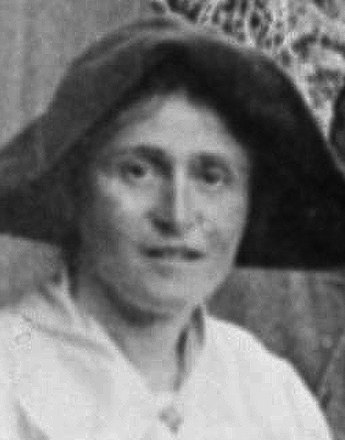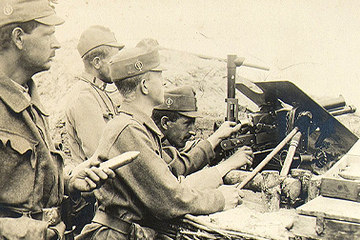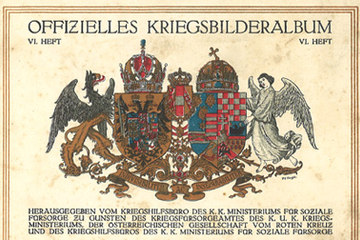Public relations in the First World War: the state organisation for war reporting
The War Press Headquarters (WPH) increased military propaganda as a means of directing public media for military purposes. Controls and censorship were intended to ensure that no unauthorised texts or images reached the public.
Only one month after the outbreak of war, the War Press Headquarters (WPH) was set up under the direction of Maximilian Ritter von Hoen as the central organisation for military propaganda in Austria-Hungary. It was from here that all propaganda activities were co-ordinated in the following years. At the same time, the WPH in collaboration with the War Monitoring Office (WMO) acted as a press censorship department, with other central functions being the influencing of public opinion in Austria and abroad, the press service and war reporting. Within the command hierarchy, the WPH was placed under the General Staff (GS), where all the information about the events of the war came together.
State propaganda in the first years of the war concentrated on written reports on the war. In order to ensure that all reports were in line with the War Monitoring Office (WMO), the number of authorised journalists was limited and their reports subjected to strict military control and censorship. The only reporting permitted was of what increased the Monarchy's reputation. The publication of information that might spread uncertainty amongst the population, undermine the morale of the troops or even be useful to the enemy was forbidden.
Accordingly, the war reporters of the War Press Headquarters played an important role in the Dual Monarchy's propaganda machine. Organised in the Press Group, they processed military information, published it in the "Austro-Hungarian War Correspondence" and transmitted the censored news material to the press. In accordance with the officially propagated image of the war, they drafted statements about the course of the war, undertook government-organised visits to the front and prepared reports on individual sections of the front.
In terms of content, the war reporters drew most of their information from the General Staff's army reports, which they embellished to make their reports as vivid as possible. They were intended to create the appearance of coming directly from the front. In fact, however, the level of information of the journalists at the WPH was restricted, and even they were only permitted access to those sections of the front where the army command expected successes. Under these circumstances, objective reporting was not possible, and instead, the reports from the front were mostly subjective, romanticising the war, presenting the soldiers as heroes and containing very little about the actual course of the war.
The reporting in newspapers was mainly in line with the WPH's official announcements. Initially, major losses by the Dual Monarchy's troops were published with considerable delay, and later they were not mentioned at all. There was a ban on publishing reports on operative measures and the course of the war, and instead defeats of the enemy were dramatically highlighted and the bravery of the Austro-Hungarian troops emphasised. Difficulties only became apparent from the fact that there were no reports. As a result, the level information of the population fell drastically in the course of the war.
Translation: David Wright
Egyden, Marie-Therese: Die Kriegsberichterstattung, in: Rauchensteiner, Manfried (Hrsg.):von Waffentreue. Die 12. Isonzoschlacht 1917. Begleitband zur Ausstellung des Österreichischen Staatsarchivs, Wien 2007, 65-76
Holzer, Anton: Die andere Front. Fotografie und Propaganda im Ersten Weltkrieg, Darmstadt 2007
-
Chapters
- Public relations in the First World War: the state organisation for war reporting
- The WPH Photograph Office
- "Embedded photography": war photographers as part of military logistics
- Photography as a weapon: reconnaissance, surveying, documentation
- Who photographed the war? Snapshooters, amateurs, front tourists
- The canon of images of the First World War as reflected in the illustrated press
- The photographer as documentarian: the amateur's eye
- World War photography between traditional pictorial conventions and the Modern











